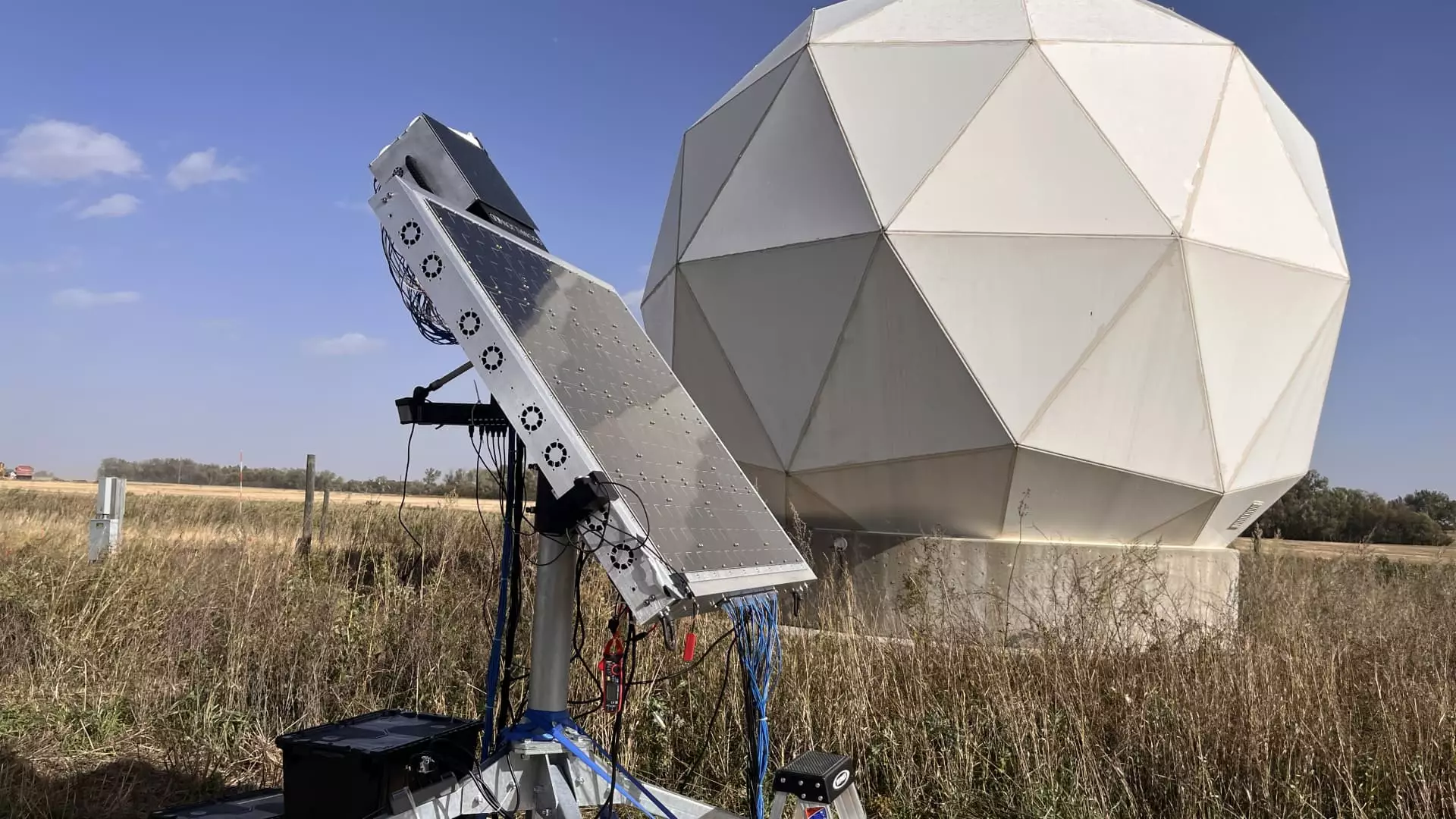Northwood Space, a formidable new player in the space technology sector, is led by the multifaceted Bridgit Mendler, who is not only known for her television and music career but is now making waves as a CEO. Since its inception earlier this year in El Segundo, California, Northwood has centered its business model around enhancing ground connectivity for space infrastructure. Ground stations, the linchpins for satellite communications, have been a focal point for Mendler’s vision of a more efficient and widespread data transmission network.
Prior to Northwood’s innovations, satellite operators traditionally relied on parabolic dish antennas, which, while functional, constrained the potential for simultaneous communications. Mendler’s approach promises to break these barriers through Northwood’s proprietary phased array technology, aimed at establishing a highly efficient interconnected network of ground stations.
Central to Northwood’s strategy is its state-of-the-art system dubbed Portal. Mendler expressed optimism that this technology could revolutionize the way ground stations function. Unlike conventional antennas that permit connections with only one to three satellites at a time, the Portal system is designed to connect with up to ten satellites simultaneously. This capability not only maximizes potential data transmission but also addresses pressing industry demands for efficient and reliable communication systems.
The ground station-as-a-service (GSaaS) market is burgeoning, catching the attention of industry giants such as Amazon and Eutelsat. However, Northwood is set on evolving this model beyond just service provision. Mendler envisions a paradigm shift in connectivity that transcends the inefficiencies of current systems, which she likens to outdated cellular network infrastructures riddled with blackouts and high costs.
In a significant advancement last week, Northwood showcased its technological prowess by conducting a successful test of its prototype antenna, affectionately referred to as “Frankie,” in the remote expanse of Maddock, North Dakota. This trial was not merely a construction exercise; it was a comprehensive telemetry, tracking, and control (TT&C) test, demonstrating Northwood’s capability to engage with a Planet Labs satellite via both S-band and X-band frequencies.
The success of the test was a turning point for Northwood, marking an entry into a new chapter of satellite communication technology. Mendler noted that they established bi-directional communication for the entire duration of the pass, indicating a smooth operational connection comparable to that of traditional ground systems. This achievement signals Northwood’s readiness not just to develop technology but to apply it effectively in real-world scenarios.
Response from Industry Leaders
The response from Planet Labs, which operates a significant fleet of over 150 satellites, underscores the importance of Northwood’s innovation. Joseph Breu, Planet’s senior director of global ground networks, hailed the successful field test as a groundbreaking moment for the ground station market. He highlighted that Northwood is addressing key issues like cost and scalability, which have historically posed hurdles for satellite operators.
Northwood’s commitment to swift production and deployment shines through in its design timeline for Frankie, which was completed within four months. The remarkably short transition period, from concept to functional testing within six hours, is indicative of the start-up’s proactive engineering approach. Moreover, as Northwood scales up its operations, it plans to deploy multiple Portal facilities that could handle unprecedented data transmission rates exceeding 1 gigabit per second.
The Road Ahead: Scaling Opportunities
Looking ahead, Northwood Space is not just resting on its laurels but is actively exploring various strategic locations in the U.S., Europe, Australia, and New Zealand for its initial fleet of Portal sites. This expansion signifies a broader vision of establishing a global network that enhances satellite connectivity and operational efficiency.
Mendler notes an industry-wide appetite for growth, and Northwood’s innovations are poised to fill that gap. By effectively positioning ground stations as the “third leg of the stool” in the space industry, alongside rockets and satellites, Northwood aims to play a pivotal role in driving technological advancement.
Northwood Space, under Bridgit Mendler’s leadership, is redefining the landscape of satellite-ground communication with its innovative Portal technology and successful initial tests. As the company continues to build momentum in this high-stakes field, it remains to be seen how its advancements will influence the broader conversation surrounding space connectivity and infrastructure. The potential for a more efficient and interconnected satellite operation framework has never seemed more promising.


Leave a Reply